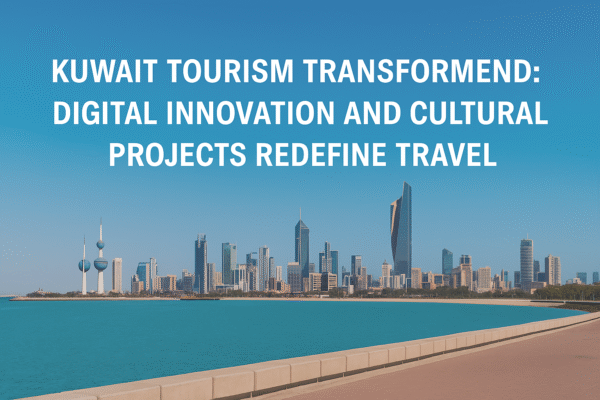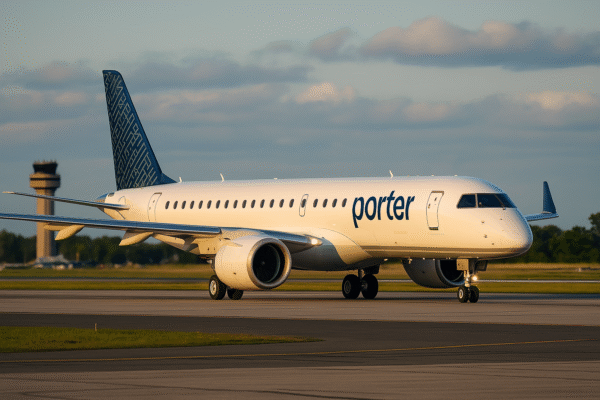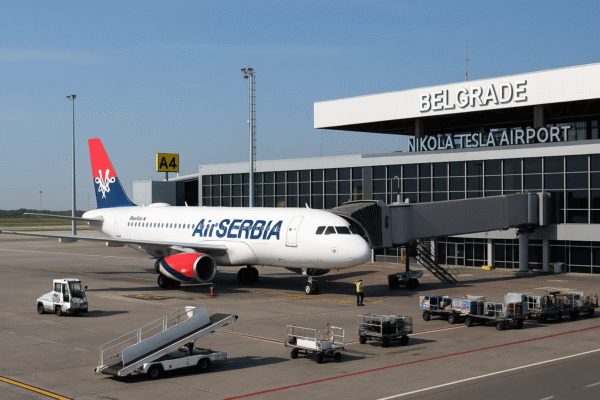Belgrade Airport Aims for One Million Monthly Passengers in August as Serbia’s Aviation Sector Soars
Belgrade Nikola Tesla Airport (BEG) is on course to achieve a historic milestone this August by handling over one million passengers in a single month, cementing its reputation as a rising hub in Southeast Europe’s aviation network. The push is part of Serbia’s broader strategy to boost international air connectivity, expand economic opportunities, and elevate the country’s position on the global tourism map.
The ambitious target reflects the airport’s dynamic recovery post-pandemic and its increasing role as a gateway for both leisure and business travel in the Balkan region. According to airport operator VINCI Airports, which took over operational control in 2018, Belgrade Airport has consistently reported double-digit growth in passenger traffic throughout 2024 and into 2025.
Strategic Expansion to Meet Rising Demand
The airport’s management has launched an aggressive strategic growth initiative, aiming not only to accommodate increased passenger flows but also to transform Belgrade into a major aviation and logistics hub for Southeast Europe. Targeted investments in terminal expansion, security upgrades, runway enhancements, and technological integration are all part of a comprehensive plan to modernize operations and improve traveler experiences.
Passenger processing capacity is being scaled up with automated border control gates, faster baggage handling systems, and intuitive check-in kiosks—all of which aim to streamline operations and cut down wait times.
Catalyzing Serbia’s Economic Growth
Aviation experts and tourism officials agree that Belgrade Airport’s rapid growth will bring significant economic benefits to Serbia. Increased air traffic directly boosts local businesses, including hotels, restaurants, taxi services, and tour operators. According to the Serbian Chamber of Commerce, each million passengers passing through Belgrade Airport contributes approximately €100 million in direct and indirect economic value to the national economy.
This surge in passenger volume is expected to create thousands of new jobs, not only at the airport itself but across Serbia’s broader travel and service industries.
Expanding Regional and Global Connectivity
As part of its expansion strategy, Belgrade Airport is actively forging new airline partnerships and introducing additional routes to key European, Middle Eastern, and Asian destinations. Serbian national carrier Air Serbia recently announced new direct flights to cities like Porto, Krakow, and Valencia, while global carriers such as Lufthansa, Qatar Airways, and Turkish Airlines have increased frequencies to and from Belgrade.
These moves reinforce Serbia’s role as a strategic connection point between Western Europe, the Middle East, and the Balkans, offering passengers more travel flexibility and better access to emerging tourism markets.
Infrastructure Investment Fuels Passenger Comfort
To support its rising passenger demand, VINCI Airports is investing over €730 million into the ongoing modernization of Nikola Tesla Airport. Key projects include the construction of a new pier with 12 additional boarding bridges, expanded retail and duty-free areas, enhanced food and beverage offerings, and a multi-level car park.
Sustainability is also a core priority. The airport has introduced energy-efficient lighting, water conservation systems, and waste management programs to reduce its environmental impact. These efforts align with VINCI’s AirPact strategy, which aims for net zero emissions across all its airports by 2050.
Emphasizing Passenger Experience and Technological Innovation
Belgrade Airport has committed to enhancing the overall passenger experience through the implementation of smart technology. Real-time flight updates, intuitive mobile apps for wayfinding and flight tracking, biometric boarding, and contactless payments are just some of the innovations currently being rolled out.
The airport’s goal is to become not only a regional leader in passenger volume but also a benchmark for efficiency, comfort, and digital transformation in travel.
A Hub Built on Community and Climate Resilience
Beyond economic and technical development, Belgrade Airport is fostering community inclusion through local employment programs, small business support, and skills training initiatives. More than 50% of new hires in 2024 came from the surrounding region, ensuring that airport growth directly benefits nearby communities.
Moreover, climate adaptation is woven into the airport’s long-term vision. From heat-resilient construction materials to flood mitigation infrastructure, Belgrade Airport is preparing to meet the challenges of climate change head-on.
Serbia’s Aviation Vision for 2030 and Beyond
The Serbian government’s National Aviation Strategy sees Belgrade Airport playing a pivotal role in meeting Serbia’s Vision 2030 tourism goals, which include attracting over 5 million foreign visitors annually and positioning Serbia among Europe’s top 20 travel destinations.
The anticipated one million passenger mark in August 2025 symbolizes more than just an airport milestone—it signals a turning point for Serbia’s entire tourism and transportation ecosystem.
A Strong Takeoff for Serbia’s Aviation Future
Belgrade Nikola Tesla Airport’s trajectory is a testament to Serbia’s ability to compete in the global air travel market while maintaining sustainable and inclusive growth. With modern infrastructure, environmental responsibility, and enhanced regional connectivity, the airport is poised to not only meet but exceed its ambitious goals.
As Belgrade Airport prepares to welcome its millionth monthly passenger this August, it not only sets a new record but also redefines what’s possible for a country once considered on the fringes of European aviation.
For more travel news like this, keep reading Global Travel Wire

















